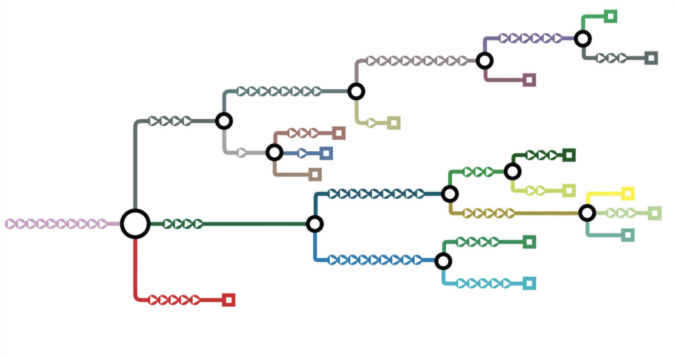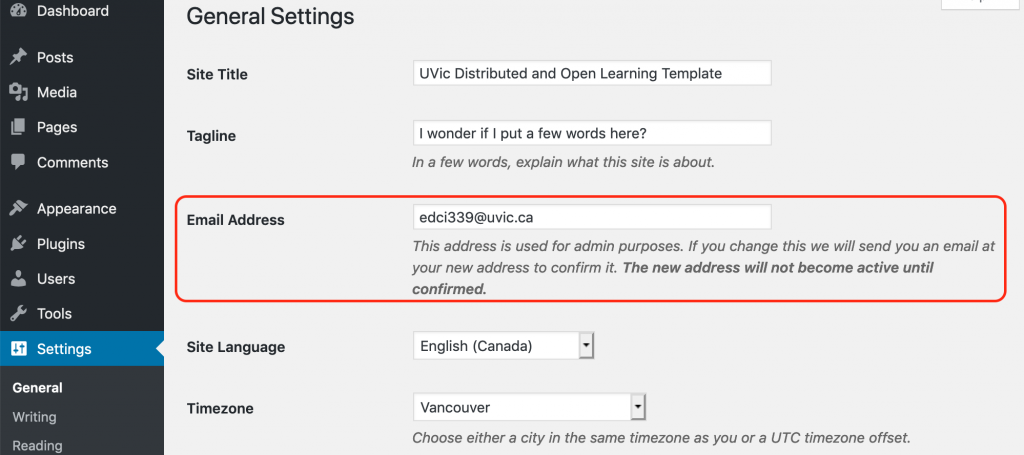The pivot to remote learning brought upon many different challenges for educators. As we were faced with a situation that no one had gone through, there was a lack of resources, research and support to move forward. Schools were doing their absolute best to create a brand new system that all families could access. While speaking with my colleagues about some of the challenges that were present, one of the most important outcomes was ensuring equity amongst learners and providing access for everyone. To support these goals we decided to work on providing resources for the following outcomes.
- Personalization Learning Outcome #1 Be able to identify new and diverse personalisation needs that have come out of the pivot and blended/online learning
- Personalization Learning Outcome #2 Be able to plan for flexible personalisation and accomodation for subject/activity/student
Personalization refers to, “instruction that is paced to learning needs, tailored to learning preferences, and tailored to the specific interests of different learners. In an environment that is fully personalized, the learning objectives and content as well as the method and pace may all vary” (Bray, 2012). Creating personalization for all students was a challenging part of the remote learning period. All students bring forward different levels of digital literacy, access to technology and levels of academic support. To support this outcome we have created and curated resources to support educators as we move into the upcoming school year. The resources will further support the needs of students and provide flexible planning for educators to accommodate all learners.
As educators move through our blog post, they will find numerous resources to support personalized learning environments. We started by creating an image and video based upon Maslow’s Hierarchy of Needs to help Educators focus on the basic physiological needs of students before focusing on their academic success. The pivot to remote learning created many changes in students and families lives. Families were left to full time jobs, isolation and becoming educators to their children. As stated by a parent in a New York Times article, “Daniel Levin’s son, Linus, 7, was supposed to be doing math. Instead, he pretended to take a shower in the living room, rubbing a dry eraser under his arms like a bar of soap, which upset his 5-year-old sister, distracting her from her coloring.” This reminds us of the everyday challenges families were faced with and the need for patience and support during this time. The image below reminds educators to focus in on social and emotional health and wellness before providing students with overwhelming learning activities. The video supporting the image creates more accessible content and further breaks down the steps to support its use.
We have also created a podcast and video. The podcast features a conversation between two masters students exploring the need for web accessible content to create equity amongst learners. During the podcast we explore what accessible content is, how it can be created and how we can use technology such as text-to-speech to support every student, including English Language Learners, students who need auditory and visual supports and students with special needs.
Our video features an interview between educators that explores the use of Inquiry based learning to create a personalized environment. The interview focuses on inquiry based instruction during the remote learning period and how this engaged, motivated and personalized instruction. Inquiry based instruction, “is meant to make learning more personal for a student, seeing it through a student’s eyes is an important perspective” (Redding, S. 2013). The more we allow students to investigate and learn about their interests, the natural move toward personalization will take place and remote learners will be further engaged in instruction. Our curated resources focus on academic papers, blog posts by educators and experts, alongside videos and images. These resources support all of the diverse needs in the classroom and support teachers to plan for personalized instruction.
Reflecting upon teachers’ own practice and planning will help them to understand how they have achieved their learning goals whilst exploring the remote learning website. Educators can strengthen their knowledge by identifying the needs and areas of student support needed based on the categories we have presented. We hope this will help educators to feel more comfortable and confident going into teaching in the fall – no matter the format. Evidence of learning will be ongoing as we continue forward during the remote learning period. Educators continual reflection upon achievements in planning, engagement and student progress will be more evident as the school year goes on.
By providing a personalized approach to learning, educators are able to unpack the curriculum by using big ideas, student centered learning and inquiry based methods. These methods promote and support educators pedagogy with the emerging trend of digitization. Remote learning quickly worked to speed up to this trend including the use of online platforms like Google Classroom, FreshGrade and many others. Educators were challenged with becoming experts and engaging students in a digital learning experience. By using these online platforms educators can engage learners personally through the use of individualized profiles, portfolios, one on one conversation and the use of the vast resources online that connect to student interests. Teachers can also provide personalized learning through the use of inquiry based learning such as at home experiments, building and creating. They can personalize assessment through student led alternatives such as voice clips, pictures, videos, posters or presentations. Digitization supports the modes of learning becoming more vast and allows a focus on curriculums core competencies. This idea of personalized learning resonates by developing students, “Core Competencies when they are engaged in the “doing” – The Core Competencies are sets of intellectual, personal, and social and emotional proficiencies that all students need in order to engage in deep, lifelong learning”. The trend of digitization continues to rise in curriculum and by using a personalized approach to learning we can help support ongoing teacher pedagogy.
Curriculum by definition helps educators understand the ‘what’ needs to be learned during a student’s progression in school. We know there are certain concepts to be covered and mastered at certain age groups. Educators plan the learning based upon these time frames and aim to have students complete the curriculum before graduating. ‘How’ we get to these outcomes is much more broad and teachers must decide the best way to support each learner in the discovery of the curriculum. “Curriculum inquiry is educational inquiry; both properly address the what and how questions together and deal with all the ramifications of trying to answer, “What should children learn, in what sequence, and by what methods?” (Egan, 2003). We use our expert knowledge with our classroom community to drive our answers as to ‘how’ we teach and engage students.
Ted Aoki described the differences between the ‘what’ and the ‘how’ of curriculum by looking at the ‘curriculum as planned’ and the ‘curriculum as lived’ by the diverse, dynamic elements of a classroom. As we personalize the approach to learning we are more focused on the lived curriculum as stated by Aoki. “This curriculum-as-lived encapsulates the hopes, dreams, motivations and curiosity of pupils, their experiences in a school setting, and their past histories, regardless of what the planned curriculum indicates” (Fuchs, 2019). The outcomes of supporting diverse personalized needs of the classroom inquire into students interest, needs and curiosities. Through the emerging trend of digitization we are encompassing the ‘what’ of the curriculum while personalizing the ‘how’ of the learning. The remote learning web page we created promotes educator’s exploration of using technology to explore a personalized, living curriculum which can spark students interest in the world of learning.
References
Aoki, T. (1986). Teaching as Indwelling Between Two Curriculum Worlds. The B.C. Teacher, 65 (3), April/May.
Bray, B., and McClaskey, K. (2012). Personalization v differentiation v individualization. Retrieved from https://education.alberta.ca/media/3069745/personalizationvsdifferentiationvsindividualization.pdf
Egan, K. (2003) What is Curriculum? JCACS, 1(1), 9-16.
Fuchs, Travis. (2019). Canadian Teacher Magazine: Dwelling Between Curriculum-As-Planned and Curriculum-As-Lived in Science Class. Retrieved from: https://canadianteachermagazine.com/2019/01/19/dwelling-between-curriculum-as-planned-and-curriculum-as-lived-in-science-class/#:~:text=This%20curriculum%2Das%2Dlived%20encapsulates,can%20often%20exist%20in%20tension.
Redding, S. (2013). Through the Student’s Eyes: A perspective on personalized Learning and Practice Guide for Teachers. Center on Innovations in Learning. https://files.eric.ed.gov/fulltext/ED558042.pdf


